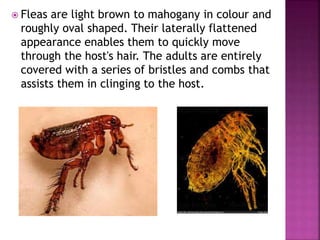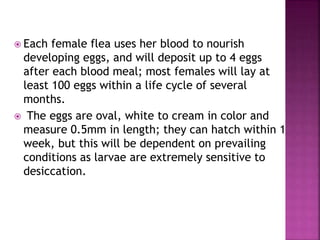Xenopsylla cheopis, also known as the oriental rat flea, is a blood-sucking parasite primarily found on rodents and a key vector for diseases like bubonic plague and murine typhus. Fleas are highly specialized with adaptations for feeding and host detection, laying around 100 eggs in their lifetime, and their larvae feed on organic material. Control measures for flea infestations include regular cleaning, proper treatment of pets, and the use of insect growth regulators.

















